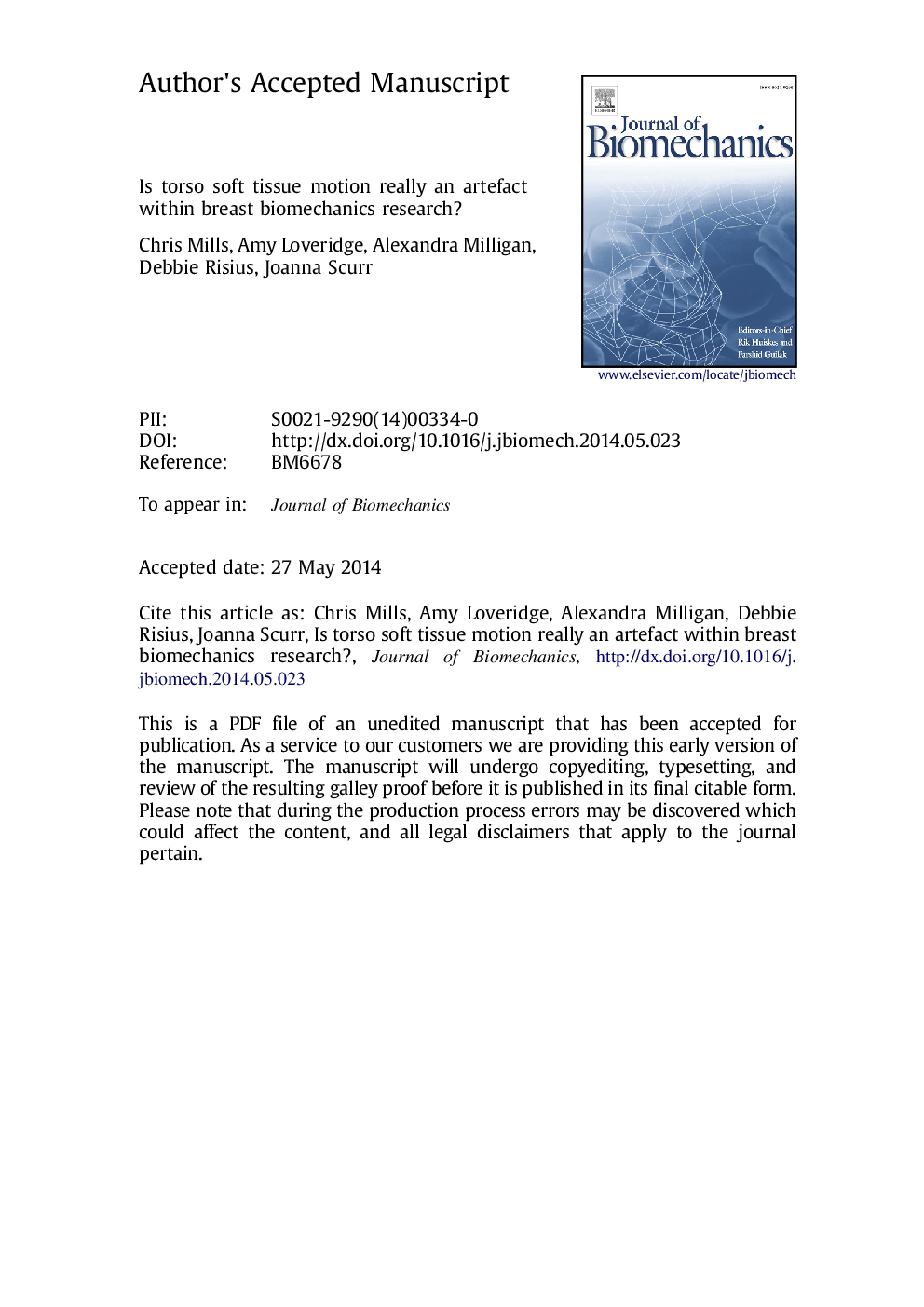| Article ID | Journal | Published Year | Pages | File Type |
|---|---|---|---|---|
| 10431831 | Journal of Biomechanics | 2014 | 22 Pages |
Abstract
For rigid body POSE estimation, any relative movement of the tracking markers on a segment is often referred to as an artefact; however this may be an important part of the signal within breast biomechanics. This study aimed to quantify differences in breast range of motion when calculated relative to the torso segment using either direct or segment optimised POSE estimation algorithms. Markers on the torso and right nipple were tracked using infrared cameras (200Â Hz) during five running gait cycles in three breast support conditions (no bra, everyday bra and sports bra). Multiplanar breast range of motion was calculated relative to the torso segment using two POSE estimation algorithms. First, the torso segment was defined using direct POSE estimation (direct). Second, while standing stationary in the anatomical position; the positional data of the torso markers were used to construct the torso using segment optimised POSE estimation (optimised). The torso segment length defined using direct POSE estimation changed significantly by 3.4Â cm compared to that of the segment optimisation POSE estimation in the no bra condition. Subsequently, superioinferior breast range of motion was significantly greater (p<0.017) when calculated using direct POSE estimation, within each of the three breast support conditions. Segment optimisation POSE estimation is recommended to minimise any differences in breast motion associated with intra segment deformation between physical activity types. However, either algorithm is recommended when evaluating different breast support garments, as a correctly fitted bra does not cause the torso markers to move relative to each other.
Related Topics
Physical Sciences and Engineering
Engineering
Biomedical Engineering
Authors
Chris Mills, Amy Loveridge, Alexandra Milligan, Debbie Risius, Joanna Scurr,
